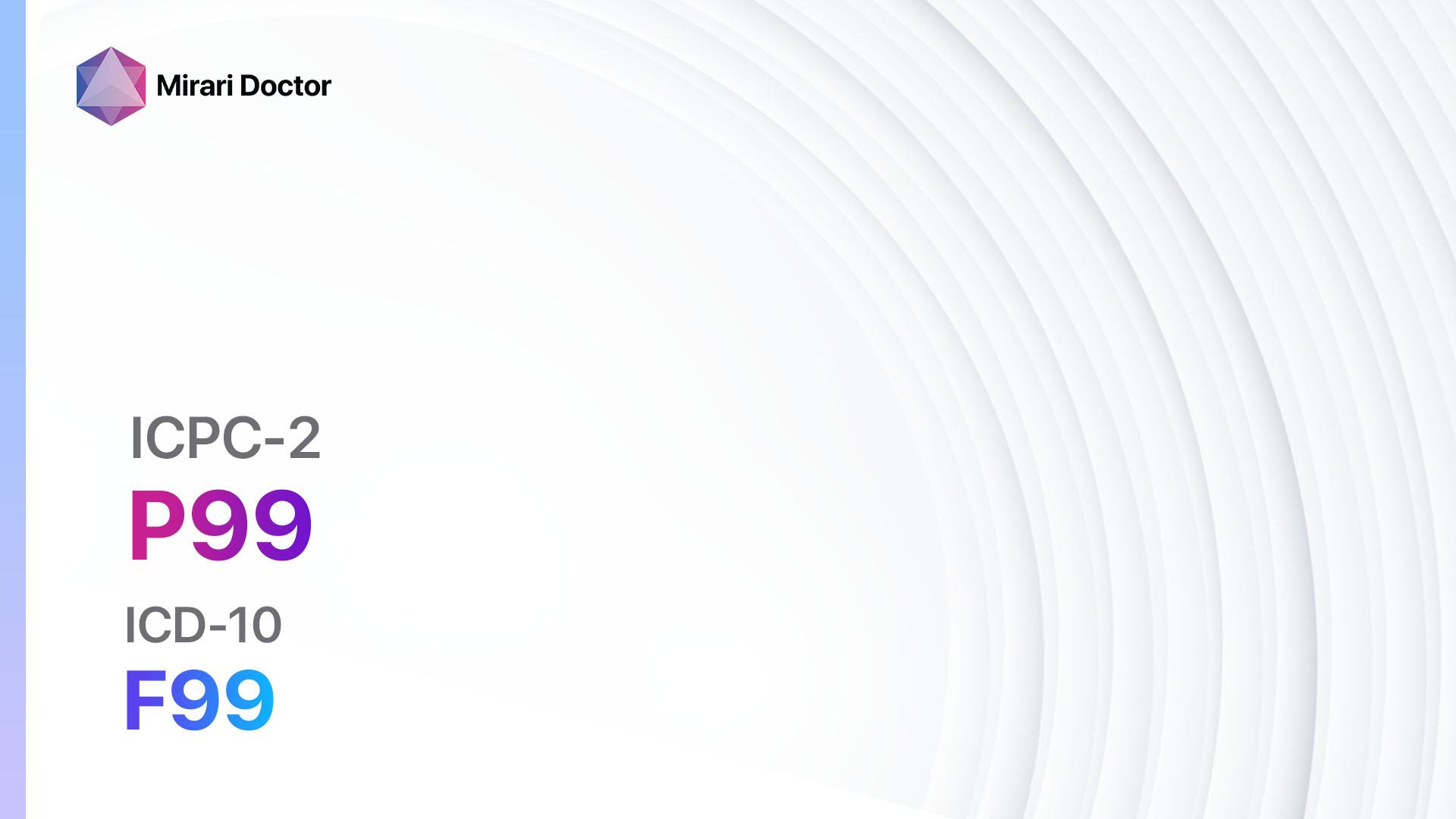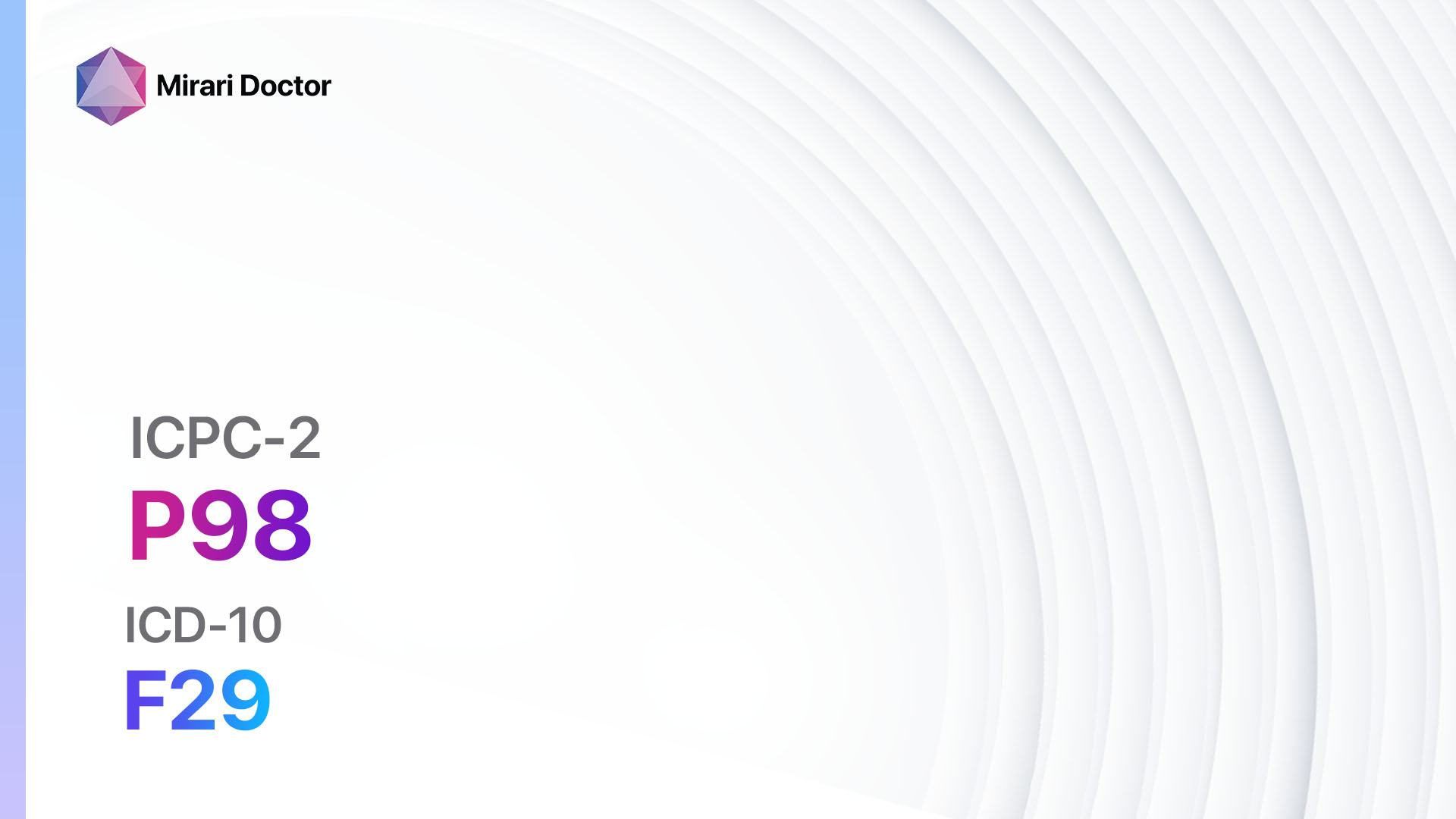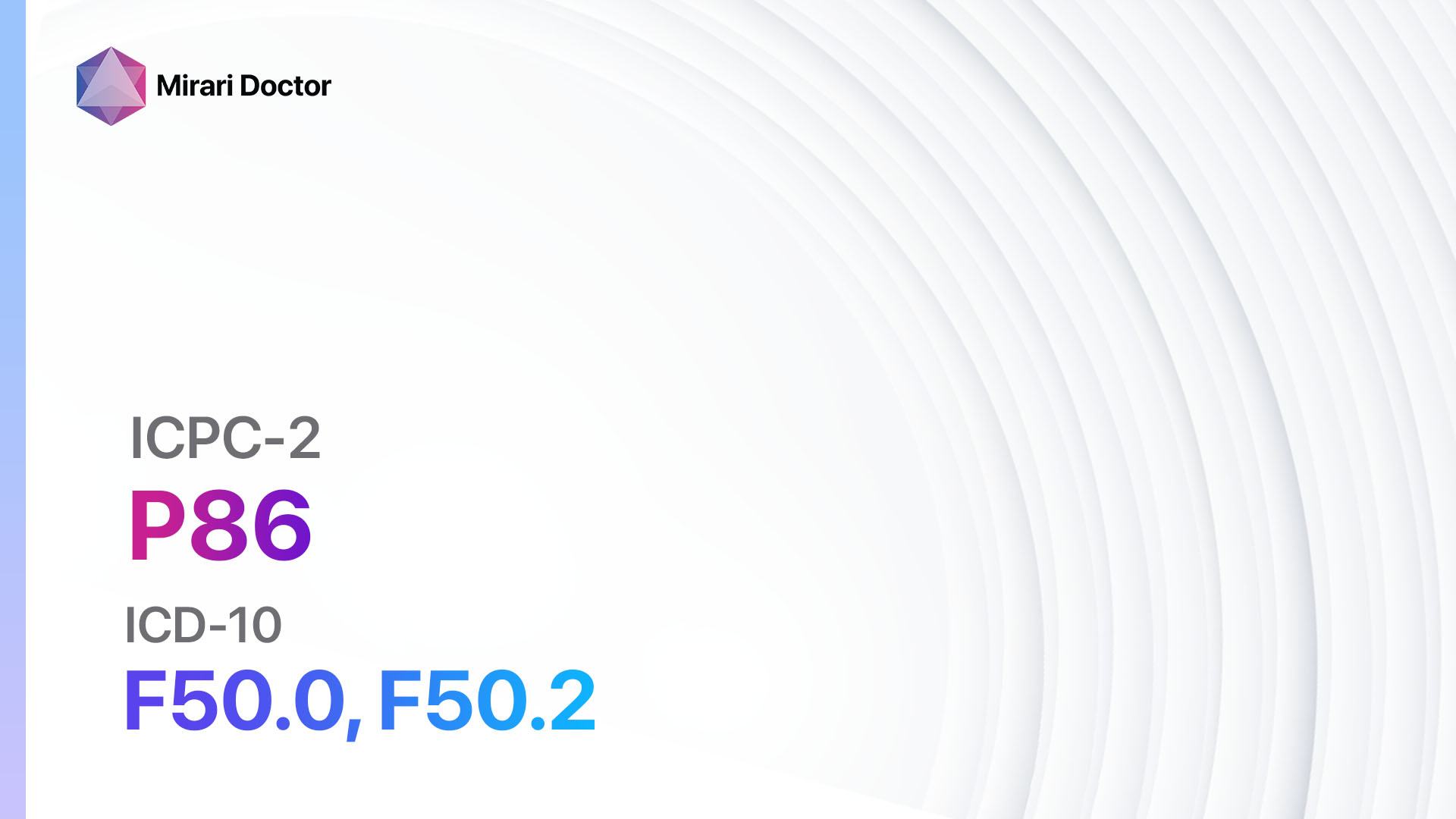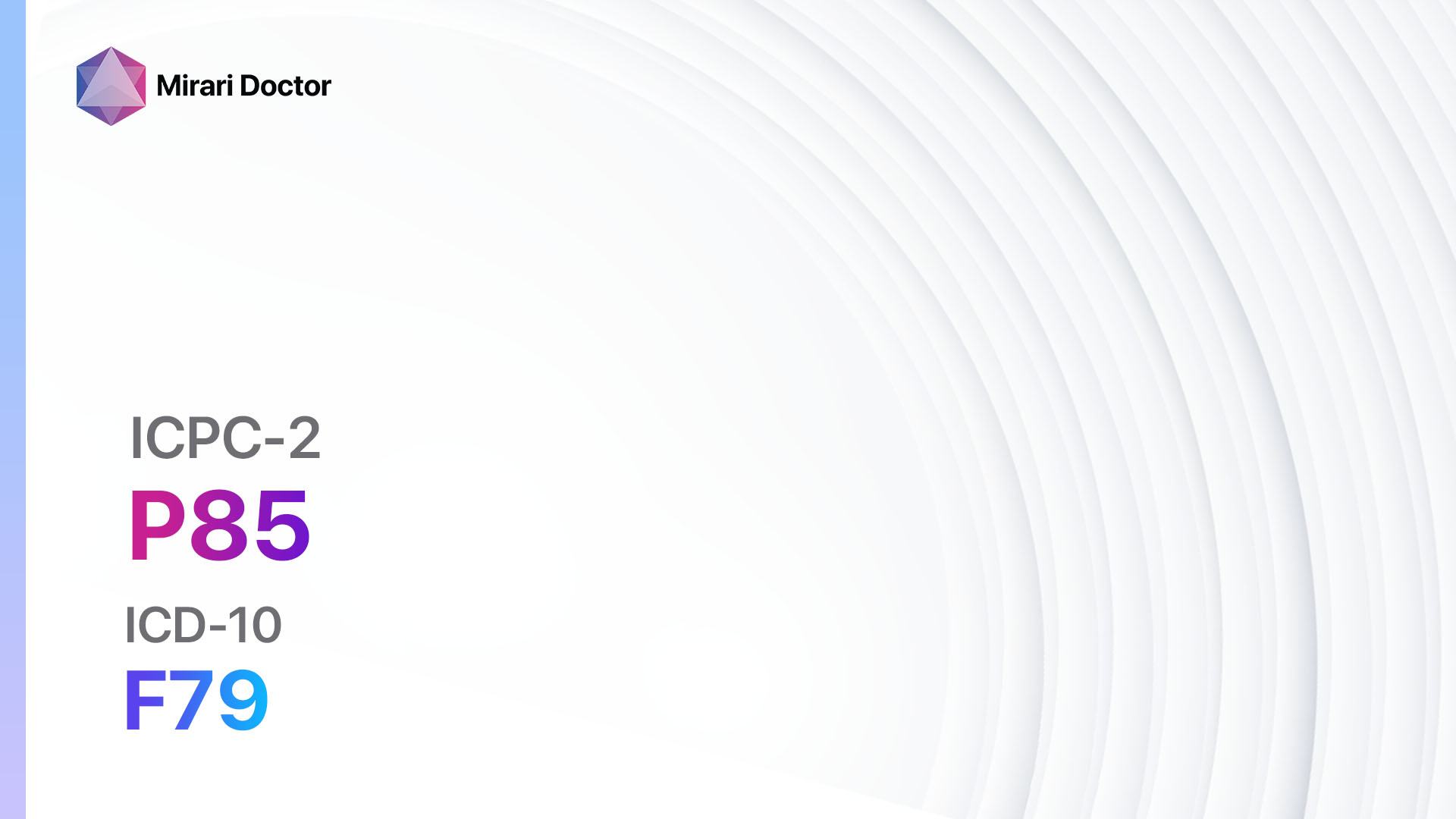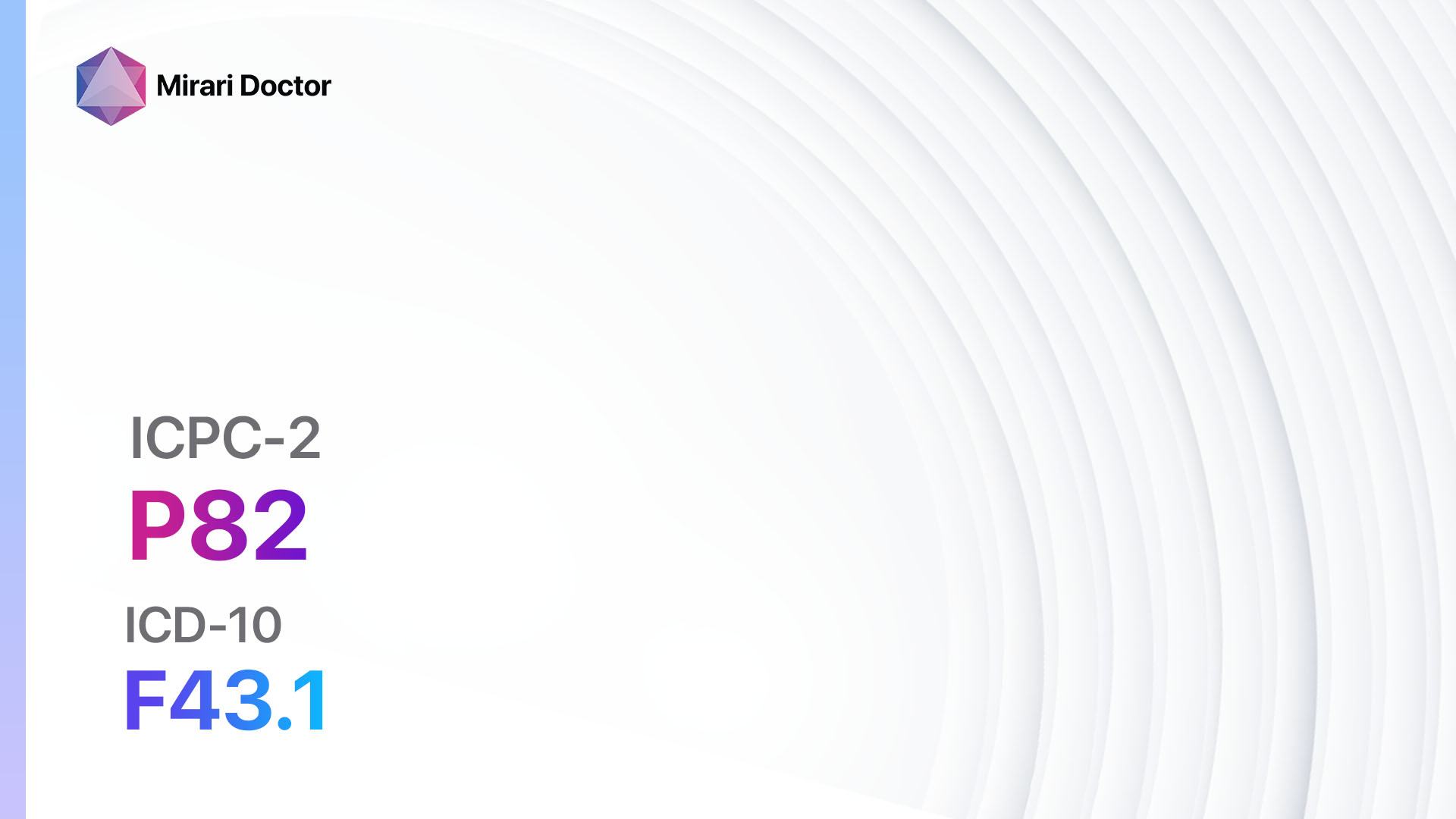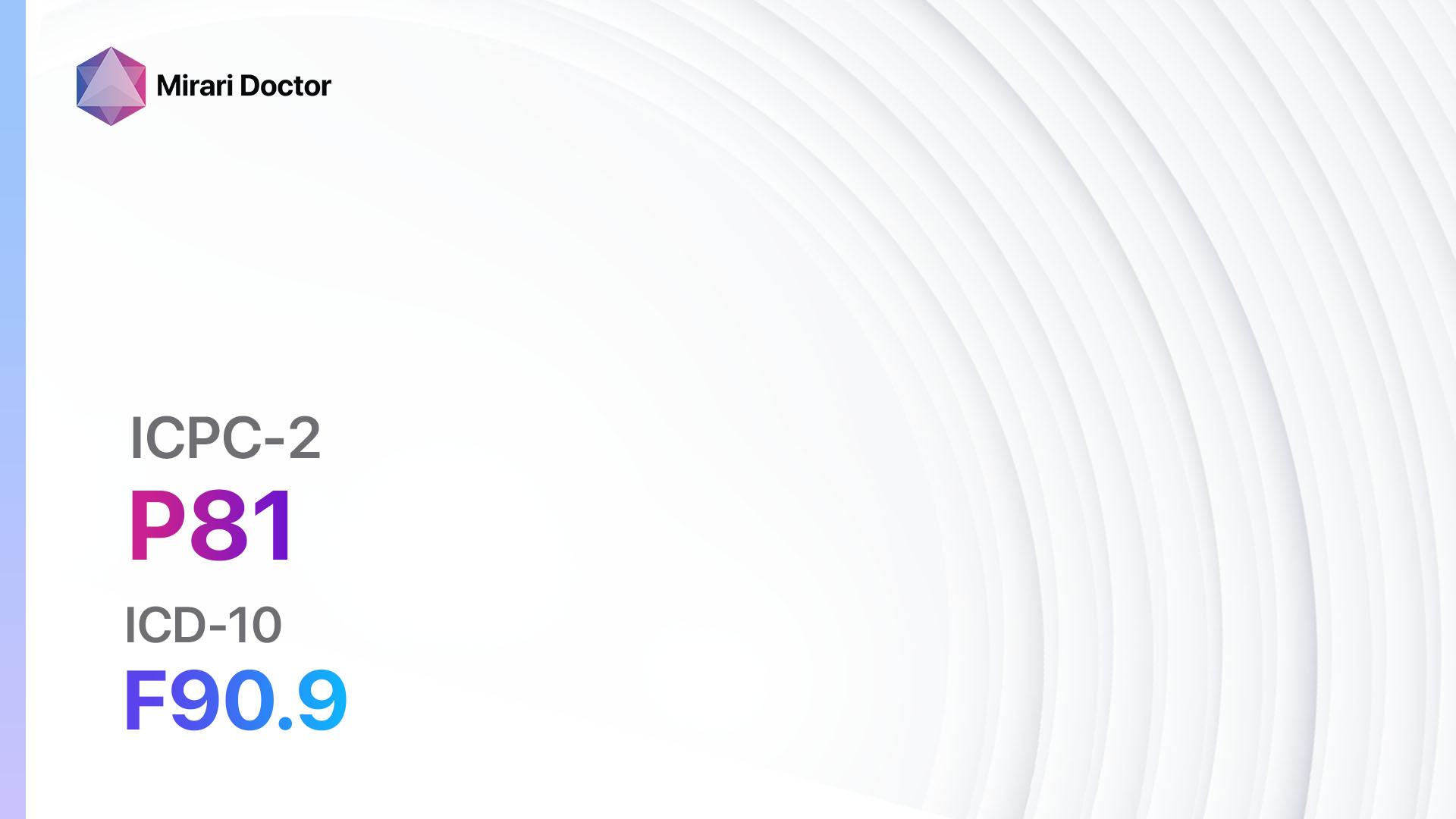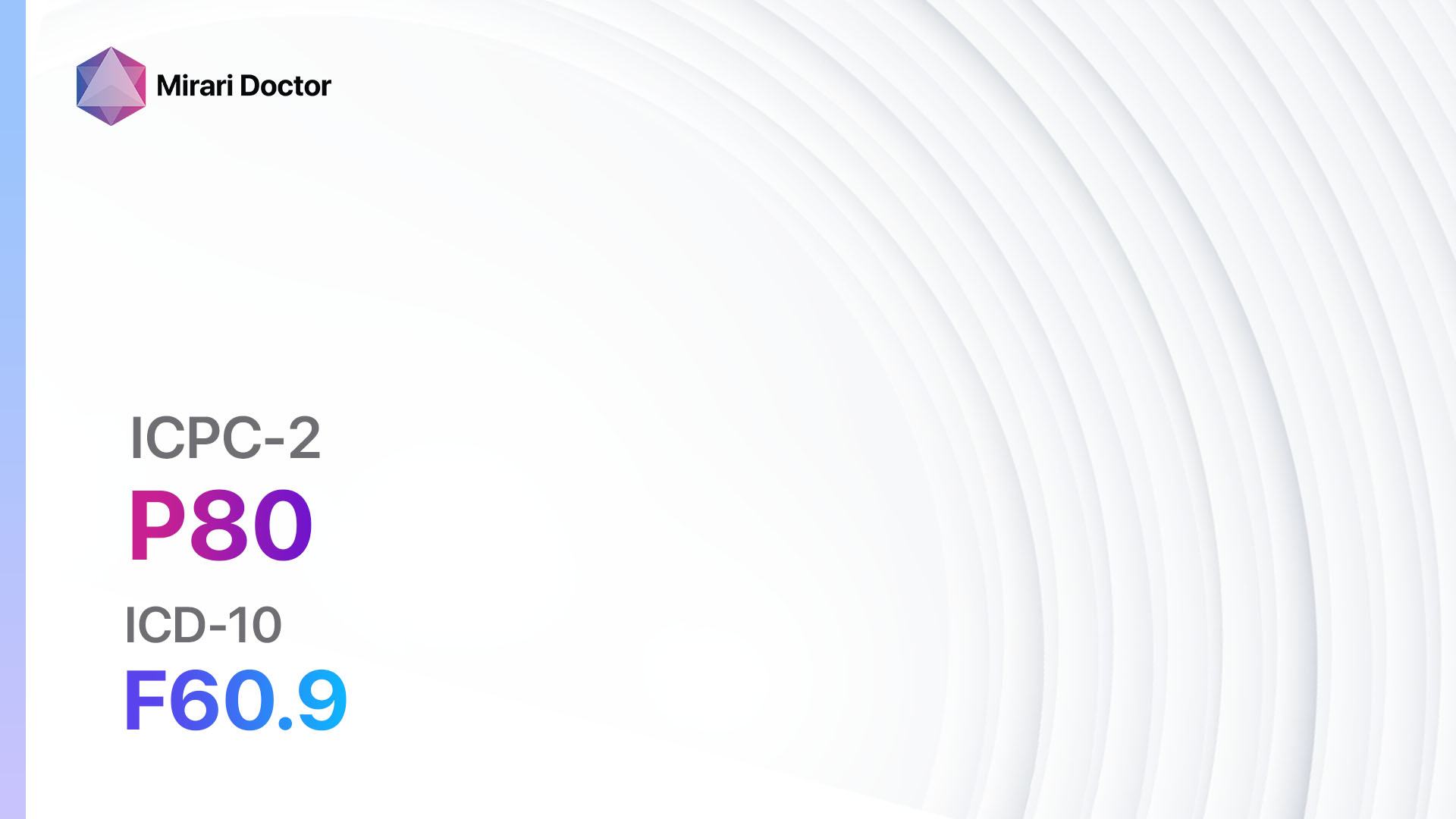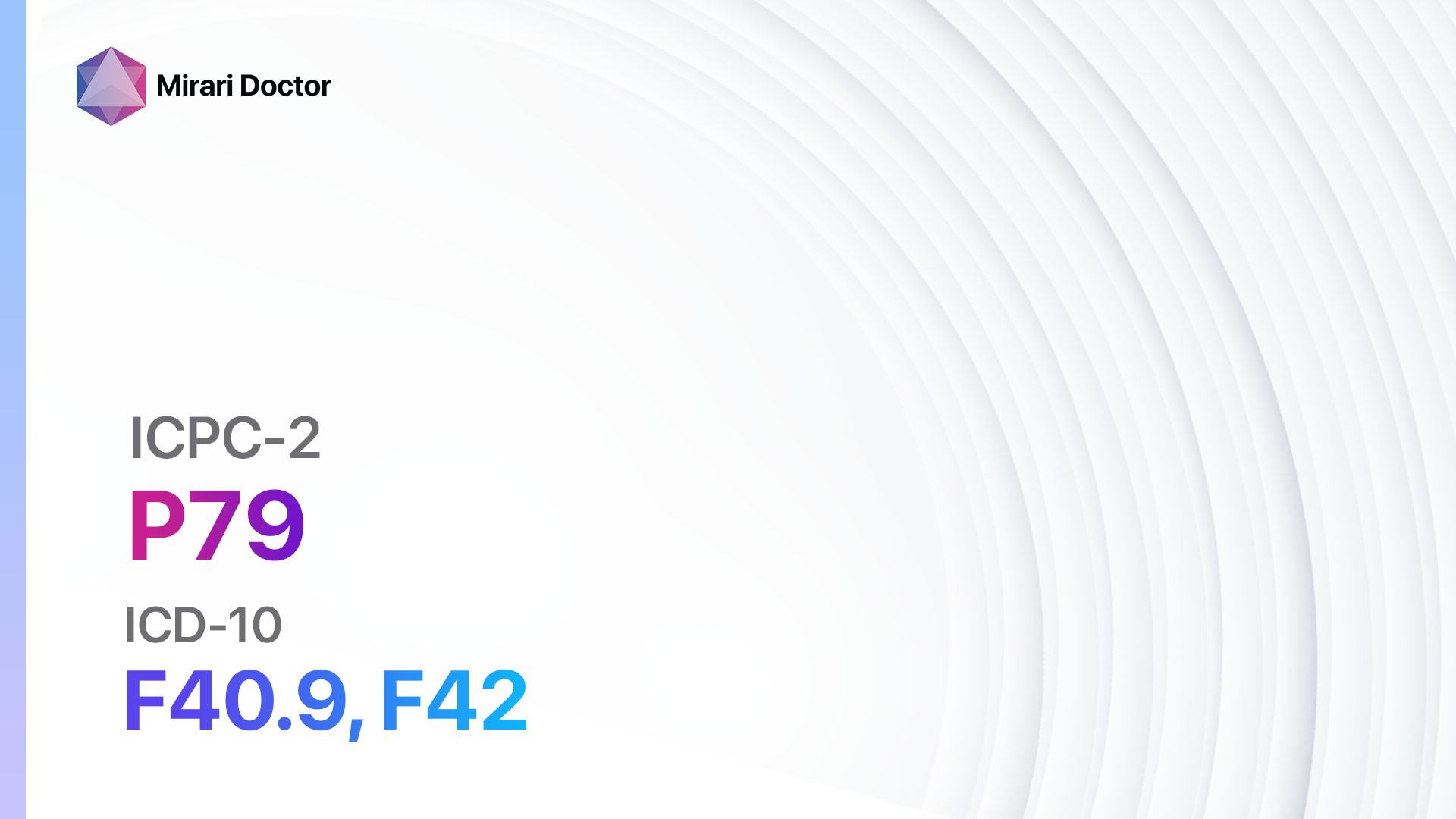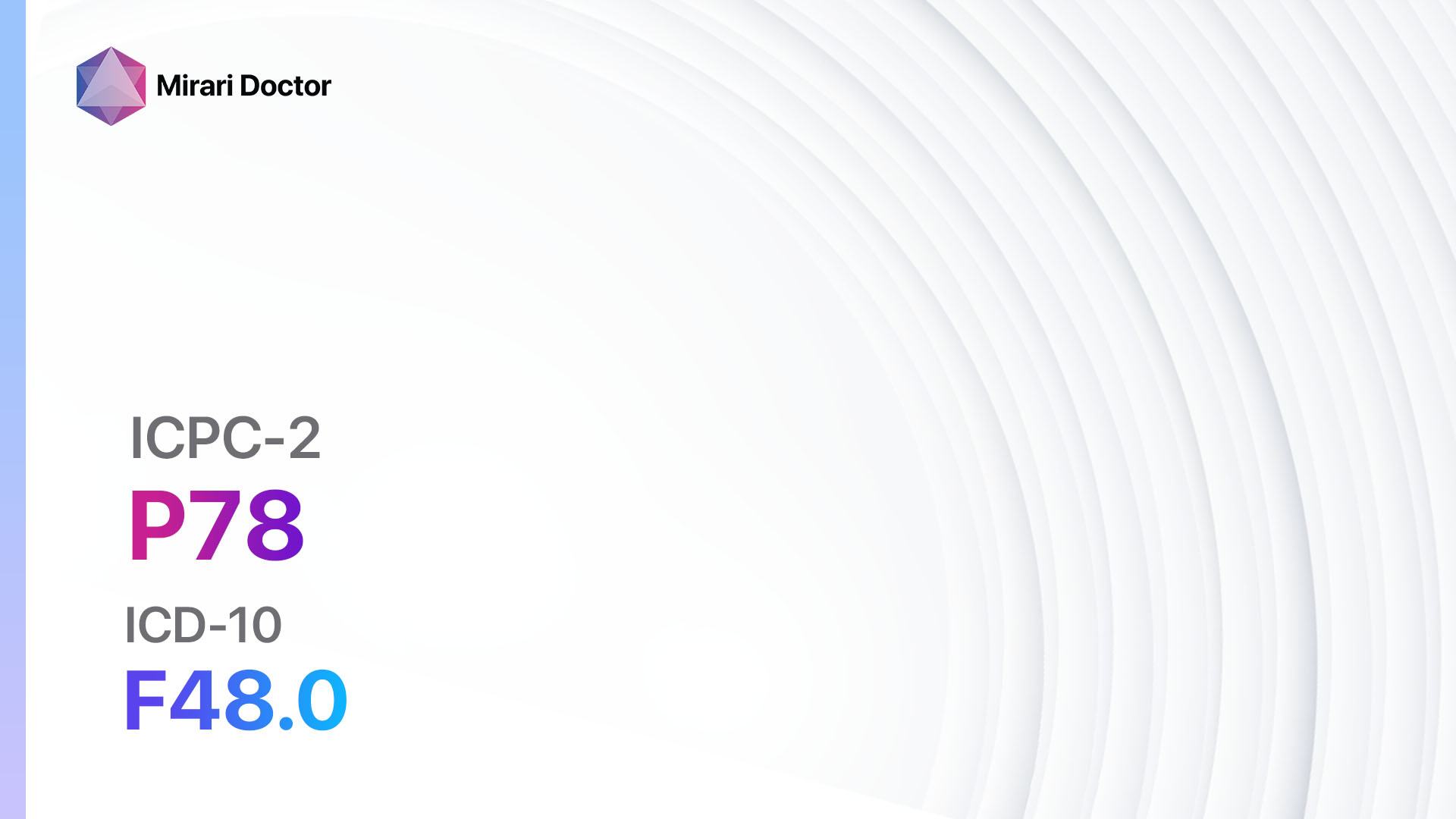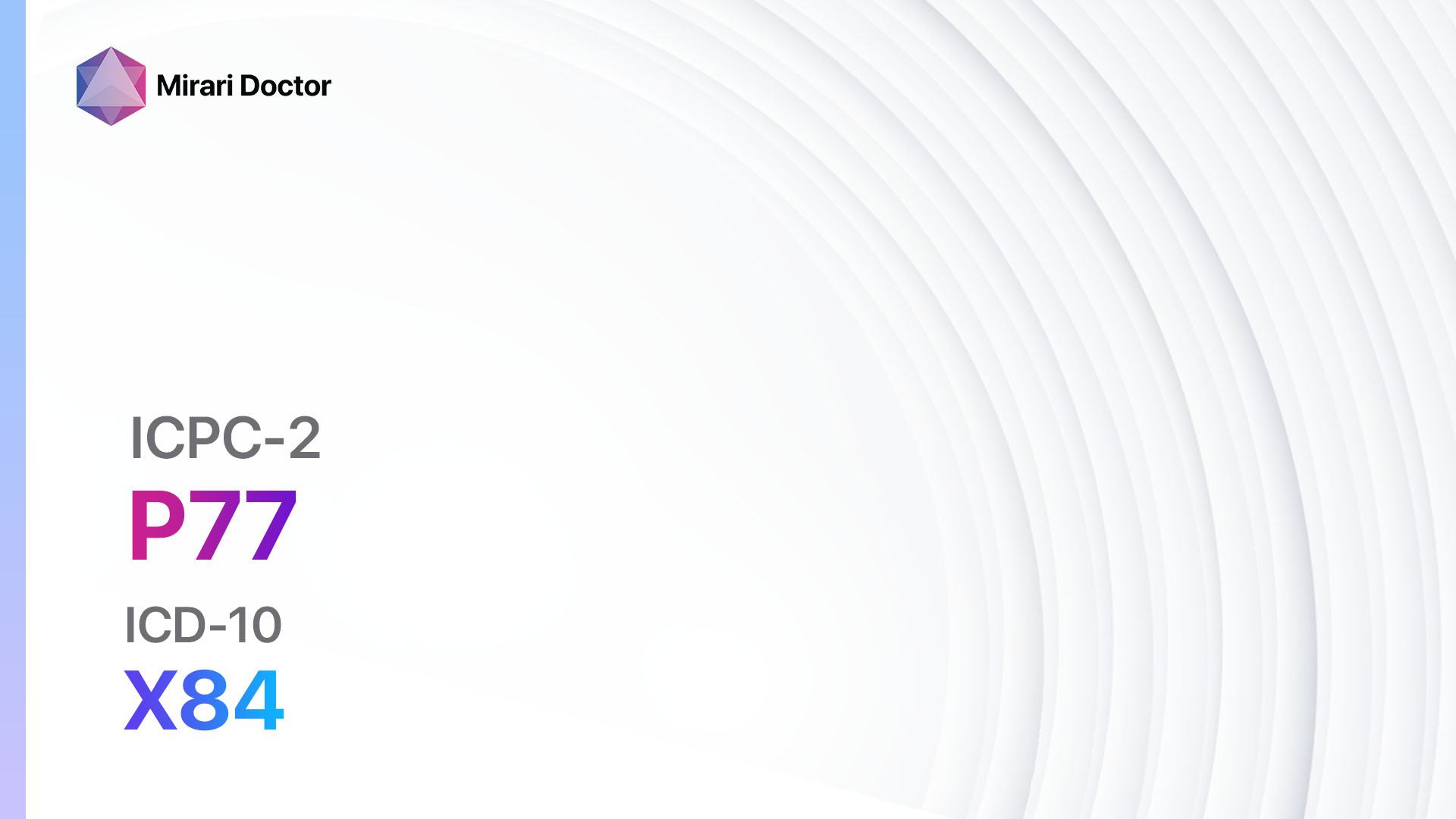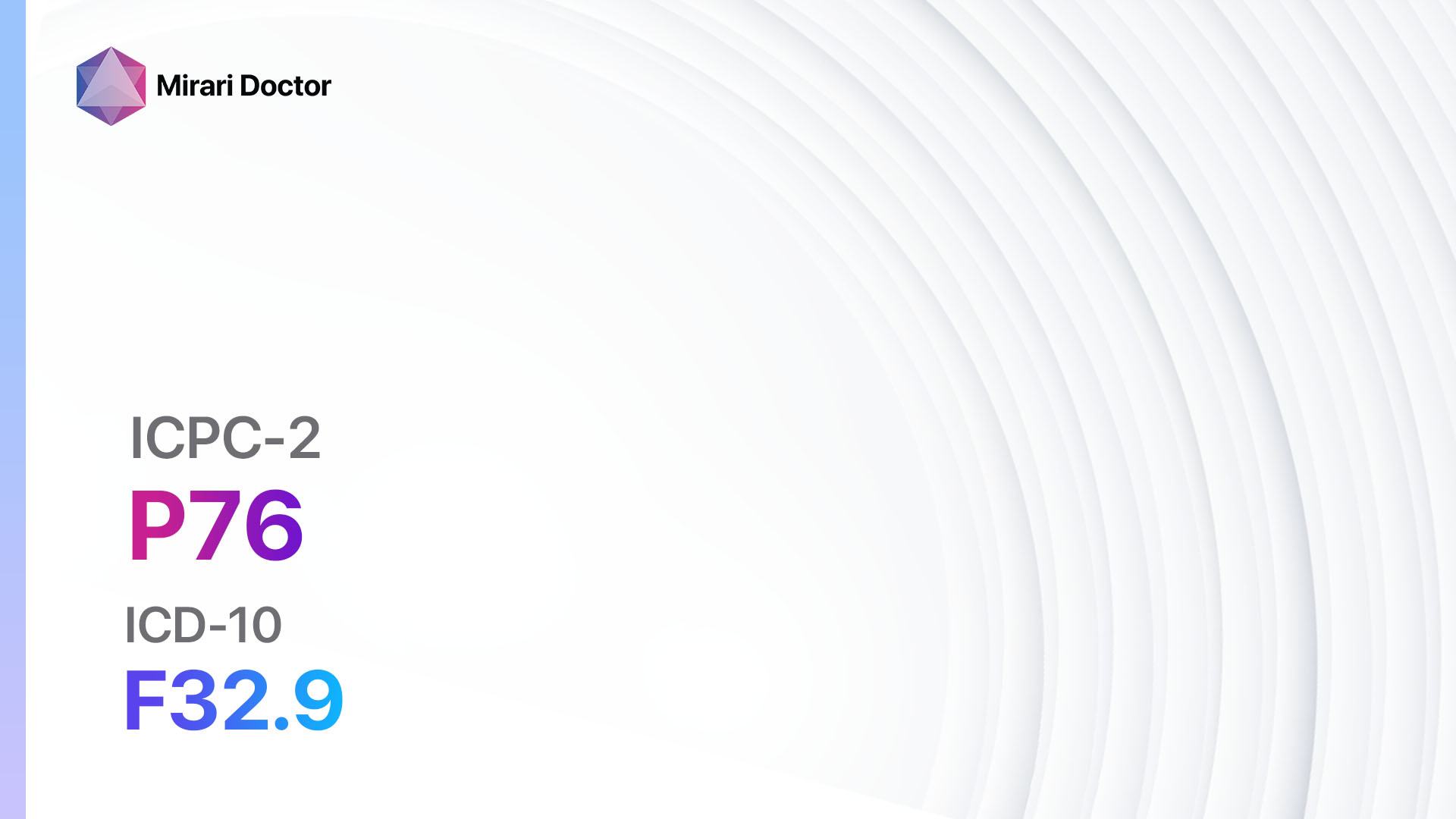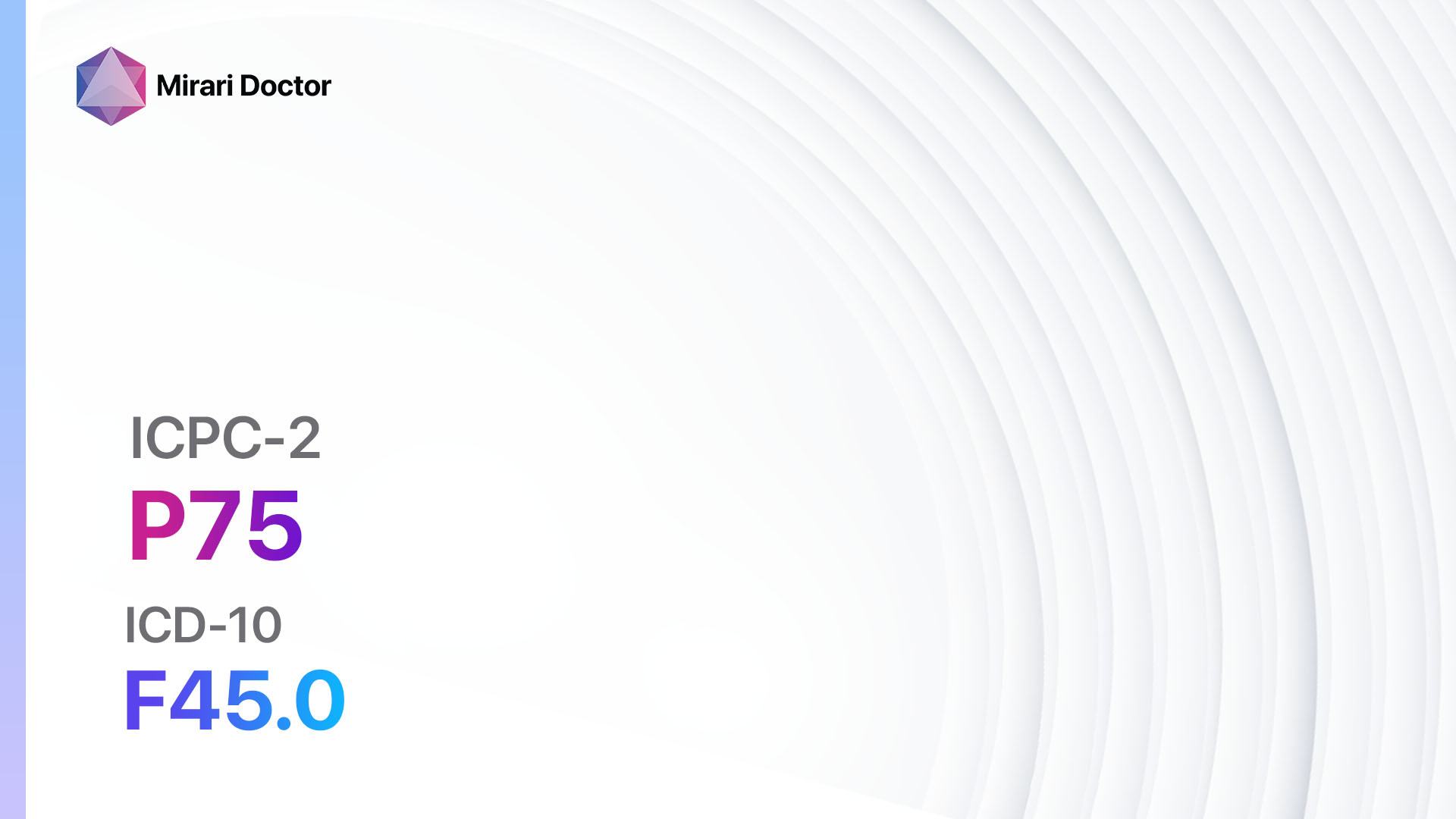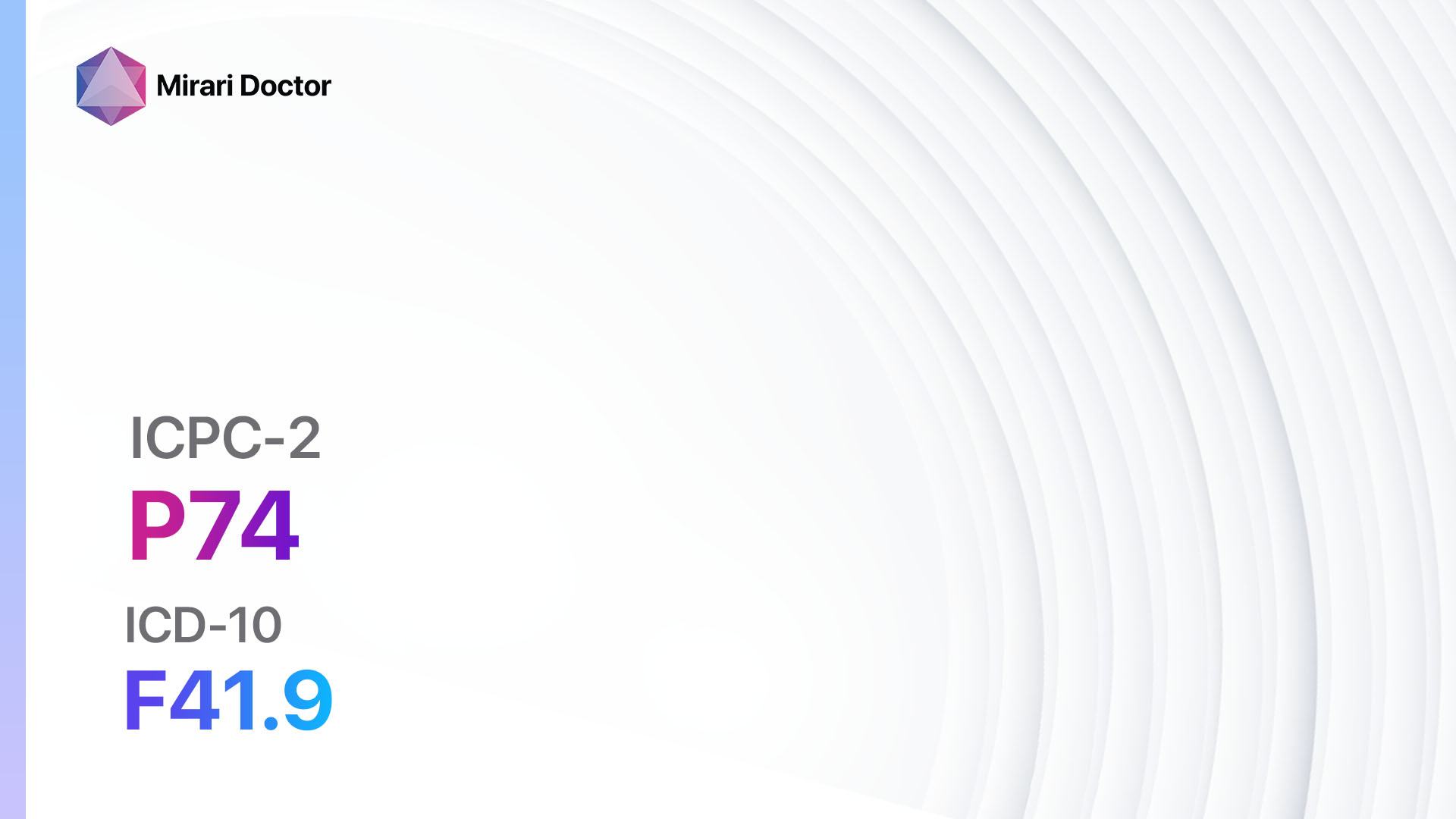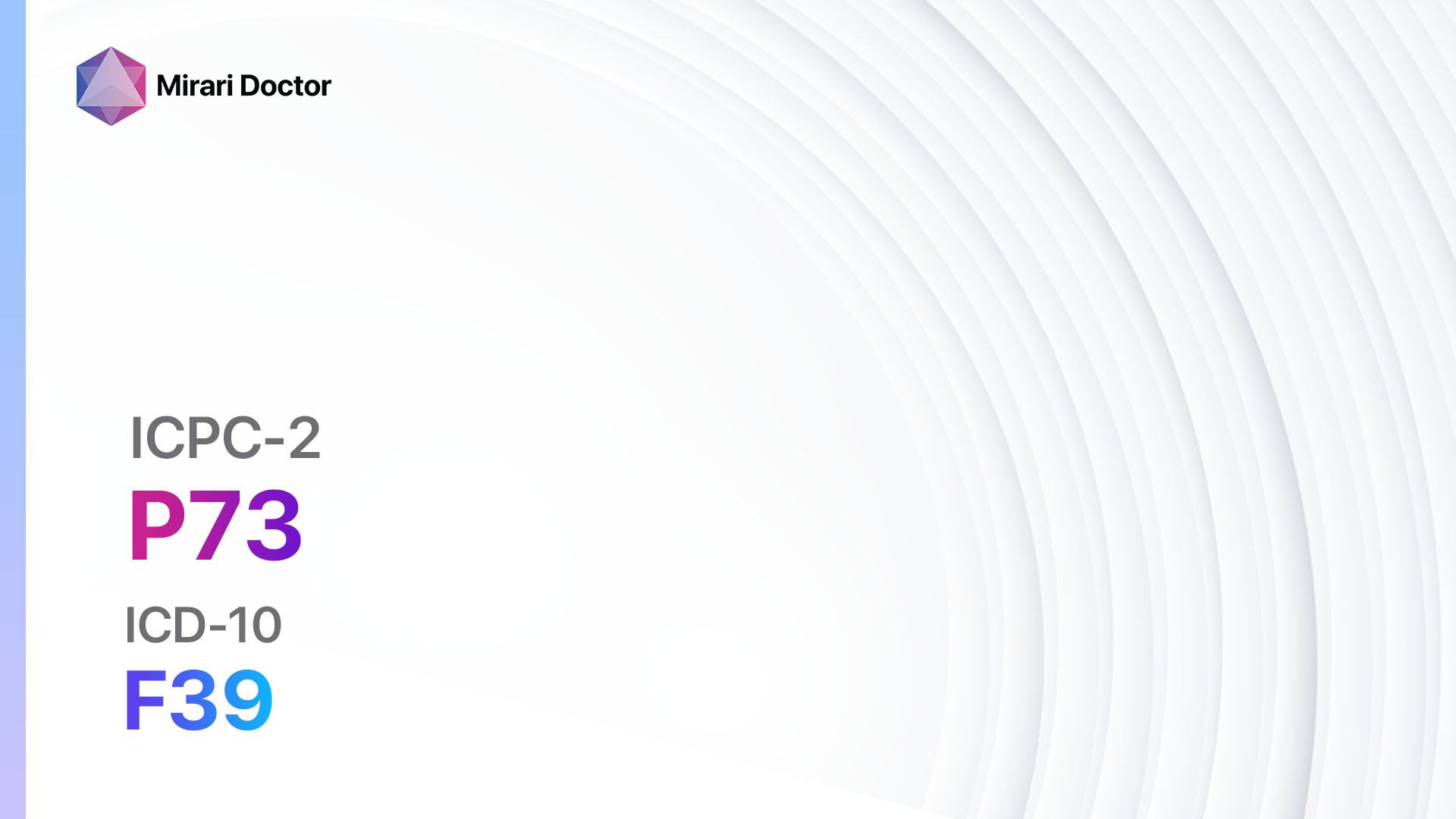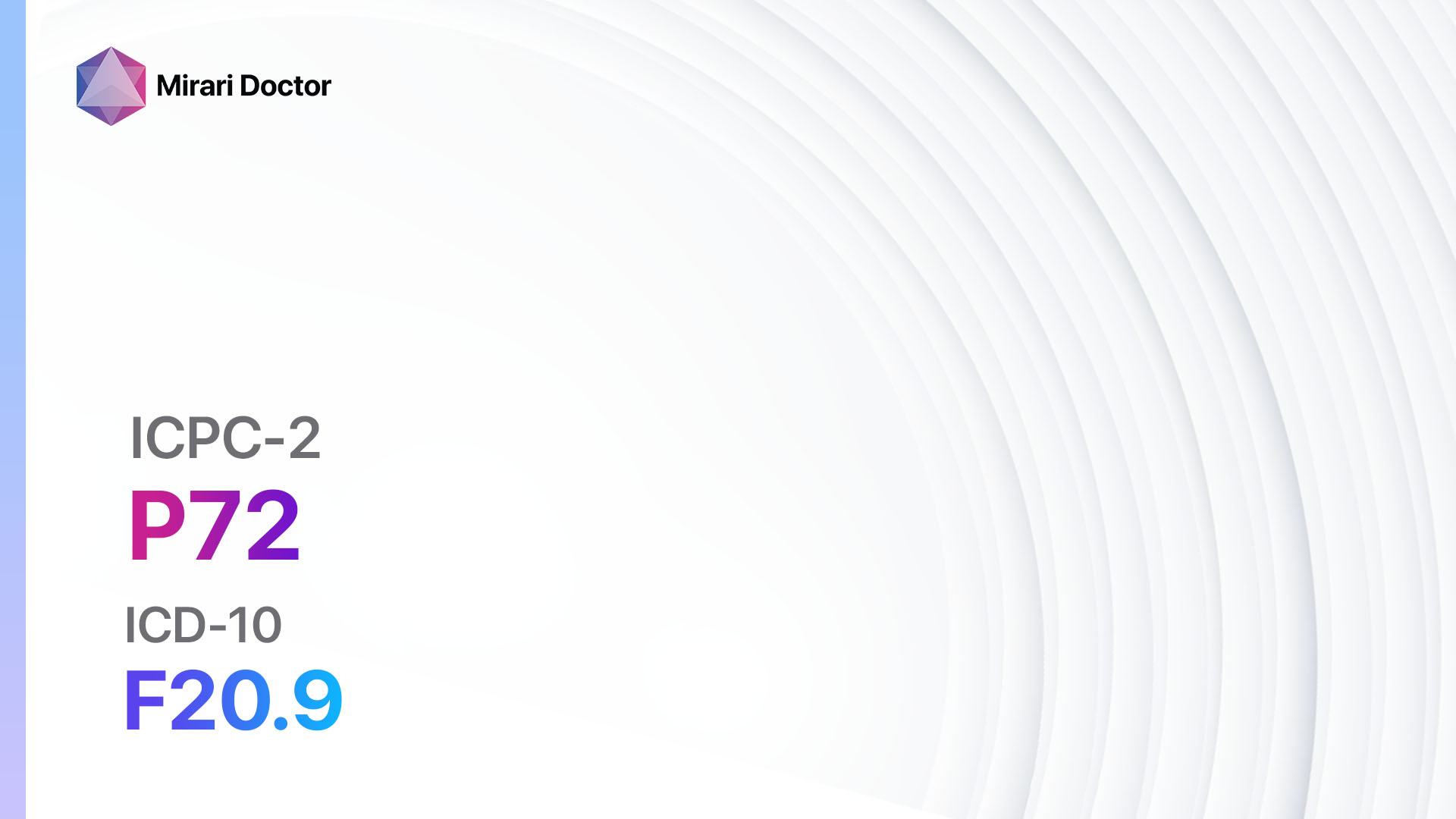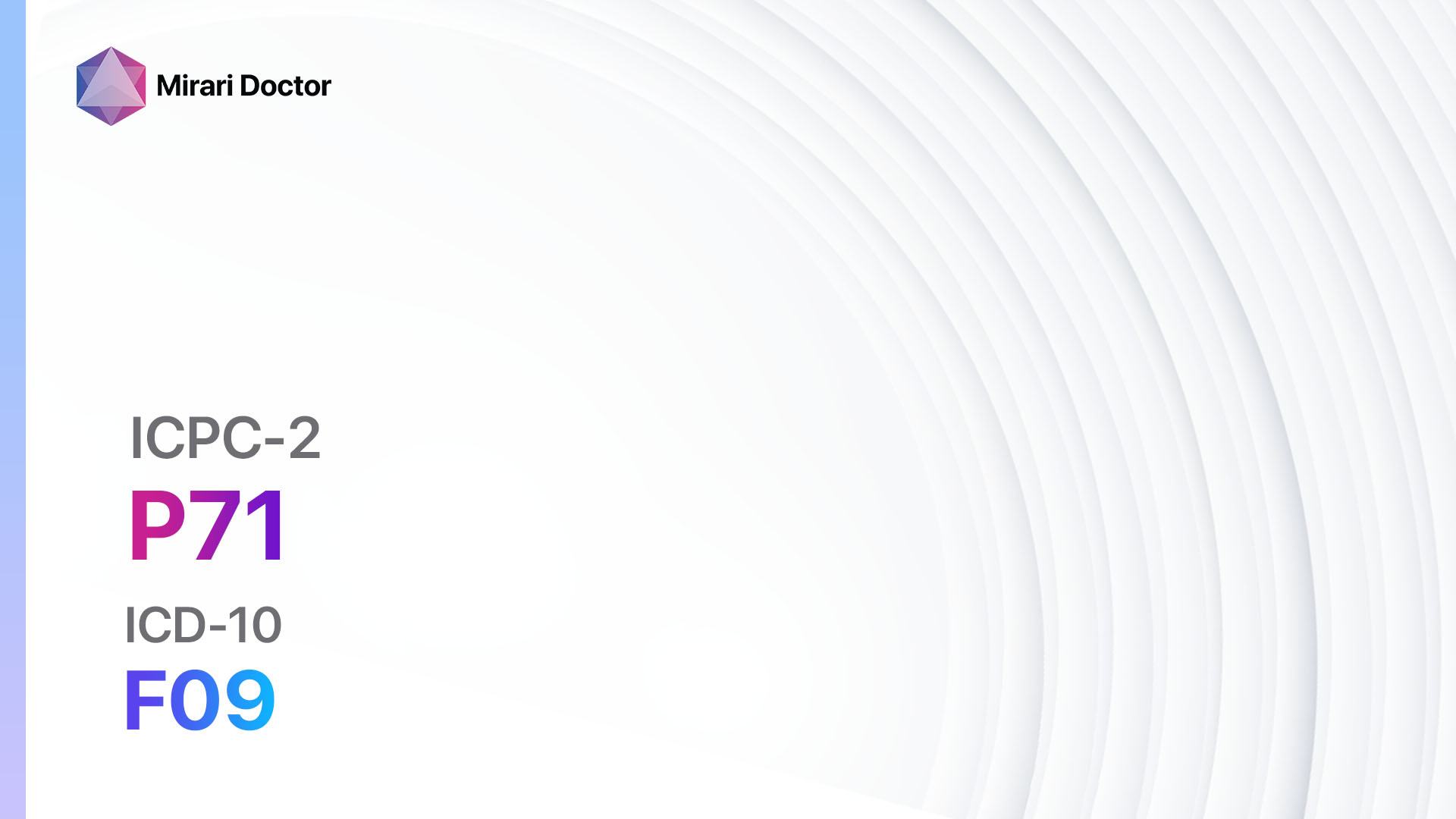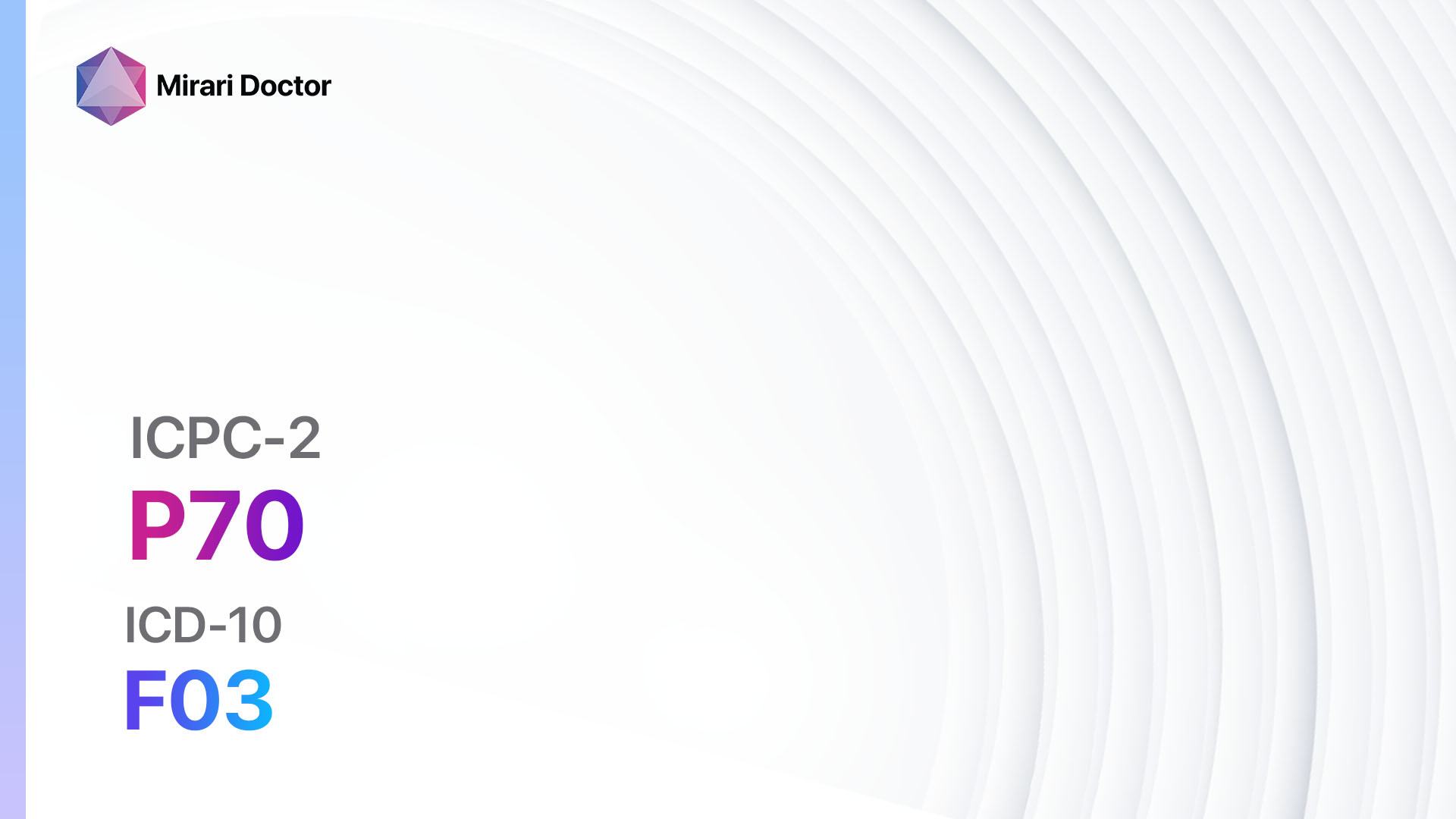
Introduction
Limited function/disability refers to a condition where an individual experiences a decrease in their ability to perform daily activities due to physical or cognitive impairments. This guide aims to provide an overview of the symptoms, causes, diagnostic steps, possible interventions, and lifestyle modifications for individuals with limited function/disability.
Codes
- ICPC-2 Code: P28 Limited function/disability (p)
- ICD-10 Code: Z73.6 Limitation of activities due to disability
Symptoms
- Difficulty in performing daily activities such as walking, dressing, or eating independently[1]
- Impaired mobility or coordination[2]
- Cognitive impairments, such as memory loss or difficulty in concentration[3]
- Pain or discomfort in the affected body parts[4]
- Fatigue or weakness[5]
- Emotional changes, such as depression or anxiety[6]
Causes
- Musculoskeletal conditions, such as arthritis, fractures, or muscle weakness[7]
- Neurological conditions, including stroke, Parkinson’s disease, or multiple sclerosis[8]
- Chronic pain conditions, such as fibromyalgia or chronic back pain[9]
- Cognitive impairments, such as dementia or Alzheimer’s disease[10]
- Traumatic injuries, such as spinal cord injury or traumatic brain injury
Diagnostic Steps
Medical History
- Gather information about the patient’s medical conditions, including any previous diagnoses or treatments.
- Identify risk factors, such as family history, lifestyle choices, or occupational hazards.
- Assess the patient’s symptoms and their impact on daily activities.
Physical Examination
- Perform a comprehensive physical examination to assess the patient’s mobility, coordination, strength, and sensory functions.
- Evaluate the range of motion in affected joints or body parts.
- Assess the patient’s balance and gait.
Laboratory Tests
- Blood tests: Evaluate the patient’s overall health, including complete blood count, metabolic panel, and inflammatory markers.
- Specialized assays: Measure specific biomarkers related to the underlying condition, such as rheumatoid factor or specific antibodies.
Diagnostic Imaging
- X-rays: Assess the integrity of bones and joints, identify fractures or degenerative changes.
- Ultrasound: Evaluate soft tissues, such as tendons or ligaments.
- CT scans or MRIs: Provide detailed images of the brain, spine, or other body parts to identify structural abnormalities or lesions.
Other Tests
- Electromyography (EMG): Assess nerve and muscle function.
- Neuropsychological testing: Evaluate cognitive function and identify specific impairments.
- Functional assessments: Measure the patient’s ability to perform specific tasks or activities.
Follow-up and Patient Education
- Schedule regular follow-up appointments to monitor the patient’s progress and adjust treatment plans if necessary.
- Provide education on managing symptoms, adapting to limitations, and accessing support services.
- Encourage the patient to engage in physical and cognitive exercises to maintain function and independence.
Possible Interventions
Traditional Interventions
Medications:
Top 5 drugs for Limited function/disability:
- Nonsteroidal anti-inflammatory drugs (NSAIDs) (e.g., Ibuprofen, Naproxen):
- Cost: Over-the-counter versions are inexpensive. Prescription-strength NSAIDs can range from $10-$100/month.
- Contraindications: History of gastrointestinal bleeding, kidney disease, or heart disease.
- Side effects: Upset stomach, increased risk of bleeding.
- Severe side effects: Kidney damage, cardiovascular events.
- Drug interactions: Blood thinners, certain blood pressure medications.
- Warning: Prolonged use may increase the risk of gastrointestinal bleeding or kidney damage.
- Muscle relaxants (e.g., Cyclobenzaprine, Methocarbamol):
- Cost: Generic versions can range from $10-$50/month.
- Contraindications: Glaucoma, urinary retention, or liver disease.
- Side effects: Drowsiness, dizziness, dry mouth.
- Severe side effects: Allergic reactions, liver toxicity.
- Drug interactions: Sedatives, alcohol, or other medications that cause drowsiness.
- Warning: Avoid driving or operating heavy machinery while taking muscle relaxants.
- Antidepressants (e.g., Amitriptyline, Duloxetine):
- Cost: Generic versions can range from $10-$50/month.
- Contraindications: Recent heart attack, narrow-angle glaucoma, or concurrent use of monoamine oxidase inhibitors (MAOIs).
- Side effects: Dry mouth, drowsiness, constipation.
- Severe side effects: Suicidal thoughts, serotonin syndrome.
- Drug interactions: MAOIs, other antidepressants, or medications that increase serotonin levels.
- Warning: May take several weeks to achieve the full therapeutic effect.
- Anticonvulsants (e.g., Gabapentin, Pregabalin):
- Cost: Generic versions can range from $10-$50/month.
- Contraindications: Allergy to anticonvulsants, kidney disease.
- Side effects: Dizziness, drowsiness, weight gain.
- Severe side effects: Suicidal thoughts, severe skin reactions.
- Drug interactions: Opioids, sedatives, or other medications that cause drowsiness.
- Warning: May cause dependence or withdrawal symptoms if abruptly stopped.
- Cognitive enhancers (e.g., Donepezil, Rivastigmine):
- Cost: Generic versions can range from $10-$100/month.
- Contraindications: Allergy to cognitive enhancers, severe liver disease.
- Side effects: Nausea, diarrhea, loss of appetite.
- Severe side effects: Slow heart rate, gastrointestinal bleeding.
- Drug interactions: Anticholinergic medications, certain antibiotics.
- Warning: Regular monitoring of liver function may be necessary.
Alternative Drugs:
- Opioids: Reserved for severe pain that is unresponsive to other treatments. Cost: Varies depending on the specific medication and dosage.
- Antianxiety medications: May be prescribed for individuals with anxiety-related symptoms. Cost: Varies depending on the specific medication and dosage.
- Antispasmodics: Used to relieve muscle spasms. Cost: Varies depending on the specific medication and dosage.
- Antipsychotics: May be prescribed for individuals with severe cognitive impairments or behavioral disturbances. Cost: Varies depending on the specific medication and dosage.
- Stimulants: Used to improve cognitive function and attention in individuals with cognitive impairments. Cost: Varies depending on the specific medication and dosage.
Surgical Procedures:
- Joint replacement surgery: Replaces damaged joints with artificial implants. Cost: $20,000 to $50,000 per joint.
- Spinal fusion surgery: Joins two or more vertebrae to stabilize the spine. Cost: $50,000 to $100,000.
- Deep brain stimulation: Involves implanting electrodes in specific brain regions to alleviate symptoms of movement disorders. Cost: $50,000 to $100,000.
Alternative Interventions
- Acupuncture: May help reduce pain and improve overall well-being. Cost: $60-$120 per session.
- Chiropractic care: Manipulation of the spine to alleviate pain and improve mobility. Cost: $50-$200 per session.
- Massage therapy: Relieves muscle tension and promotes relaxation. Cost: $50-$100 per session.
- Yoga or Tai Chi: Improves flexibility, balance, and overall physical and mental well-being. Cost: Varies depending on the location and instructor.
- Assistive devices: Can include mobility aids, such as canes or walkers, or adaptive equipment for daily activities. Cost: Varies depending on the specific device.
Lifestyle Interventions
- Physical therapy: Helps improve strength, flexibility, and mobility. Cost: $50-$150 per session.
- Occupational therapy: Focuses on improving daily activities and functional independence. Cost: $50-$150 per session.
- Speech therapy: Assists with communication and swallowing difficulties. Cost: $50-$150 per session.
- Cognitive rehabilitation: Helps individuals with cognitive impairments regain or improve cognitive function. Cost: $50-$150 per session.
- Healthy diet and exercise: Promotes overall well-being and can help manage symptoms. Cost: Varies depending on individual choices and preferences.
It is important to note that the cost ranges provided are approximate and may vary depending on the location and availability of the interventions. It is recommended to consult with healthcare professionals for personalized treatment options and cost estimates.
Mirari Cold Plasma Alternative Intervention
Understanding Mirari Cold Plasma
- Safe and Non-Invasive Treatment: Mirari Cold Plasma is a safe and non-invasive treatment option for various skin conditions. It does not require incisions, minimizing the risk of scarring, bleeding, or tissue damage.
- Efficient Extraction of Foreign Bodies: Mirari Cold Plasma facilitates the removal of foreign bodies from the skin by degrading and dissociating organic matter, allowing easier access and extraction.
- Pain Reduction and Comfort: Mirari Cold Plasma has a local analgesic effect, providing pain relief during the treatment, making it more comfortable for the patient.
- Reduced Risk of Infection: Mirari Cold Plasma has antimicrobial properties, effectively killing bacteria and reducing the risk of infection.
- Accelerated Healing and Minimal Scarring: Mirari Cold Plasma stimulates wound healing and tissue regeneration, reducing healing time and minimizing the formation of scars.
Mirari Cold Plasma Prescription
Video instructions for using Mirari Cold Plasma Device – P28 Limited function/disability (p) (ICD-10:Z73.6)
| Mild | Moderate | Severe |
| Mode setting: 7 (Immunotherapy) Location: 1 (Sacrum) Morning: 15 minutes, Evening: 15 minutes |
Mode setting: 7 (Immunotherapy) Location: 1 (Sacrum) Morning: 30 minutes, Lunch: 30 minutes, Evening: 30 minutes |
Mode setting: 7 (Immunotherapy) Location: 1 (Sacrum) Morning: 30 minutes, Lunch: 30 minutes, Evening: 30 minutes |
| Mode setting: 7 (Immunotherapy) Location: 4 (Heart, Bile & Pancreas) Morning: 15 minutes, Evening: 15 minutes |
Mode setting: 7 (Immunotherapy) Location: 4 (Heart, Bile & Pancreas) Morning: 30 minutes, Lunch: 30 minutes, Evening: 30 minutes |
Mode setting: 7 (Immunotherapy) Location: 4 (Heart, Bile & Pancreas) Morning: 30 minutes, Lunch: 30 minutes, Evening: 30 minutes |
| Mode setting: 7 (Immunotherapy) Location: 6 (Throat, Lymphatic & Thyroid) Morning: 15 minutes, Evening: 15 minutes |
Mode setting: 7 (Immunotherapy) Location: 6 (Throat, Lymphatic & Thyroid) Morning: 30 minutes, Lunch: 30 minutes, Evening: 30 minutes |
Mode setting: 7 (Immunotherapy) Location: 6 (Throat, Lymphatic & Thyroid) Morning: 30 minutes, Lunch: 30 minutes, Evening: 30 minutes |
| Mode setting: 7 (Immunotherapy) Location: 7 (Neuro system & ENT) Morning: 15 minutes, Evening: 15 minutes |
Mode setting: 7 (Immunotherapy) Location: 7 (Neuro system & ENT) Morning: 30 minutes, Lunch: 30 minutes, Evening: 30 minutes |
Mode setting: 7 (Immunotherapy) Location: 7 (Neuro system & ENT) Morning: 30 minutes, Lunch: 30 minutes, Evening: 30 minutes |
| Total Morning: 60 minutes approx. $10 USD, Evening: 60 minutes approx. $10 USD |
Total Morning: 120 minutes approx. $20 USD, Lunch: 120 minutes approx. $20 USD, Evening: 120 minutes approx. $20 USD, |
Total Morning: 120 minutes approx. $20 USD, Lunch: 120 minutes approx. $20 USD, Evening: 120 minutes approx. $20 USD, |
| Usual treatment for 7-60 days approx. $140 USD – $1200 USD | Usual treatment for 6-8 weeks approx. $2,520 USD – $3,360 USD |
Usual treatment for 3-6 months approx. $5,400 USD – $10,800 USD
|
 |
|
Use the Mirari Cold Plasma device to treat Limited function/disability (p) effectively.
WARNING: MIRARI COLD PLASMA IS DESIGNED FOR THE HUMAN BODY WITHOUT ANY ARTIFICIAL OR THIRD PARTY PRODUCTS. USE OF OTHER PRODUCTS IN COMBINATION WITH MIRARI COLD PLASMA MAY CAUSE UNPREDICTABLE EFFECTS, HARM OR INJURY. PLEASE CONSULT A MEDICAL PROFESSIONAL BEFORE COMBINING ANY OTHER PRODUCTS WITH USE OF MIRARI.
Step 1: Cleanse the Skin
- Start by cleaning the affected area of the skin with a gentle cleanser or mild soap and water. Gently pat the area dry with a clean towel.
Step 2: Prepare the Mirari Cold Plasma device
- Ensure that the Mirari Cold Plasma device is fully charged or has fresh batteries as per the manufacturer’s instructions. Make sure the device is clean and in good working condition.
- Switch on the Mirari device using the power button or by following the specific instructions provided with the device.
- Some Mirari devices may have adjustable settings for intensity or treatment duration. Follow the manufacturer’s instructions to select the appropriate settings based on your needs and the recommended guidelines.
Step 3: Apply the Device
- Place the Mirari device in direct contact with the affected area of the skin. Gently glide or hold the device over the skin surface, ensuring even coverage of the area experiencing.
- Slowly move the Mirari device in a circular motion or follow a specific pattern as indicated in the user manual. This helps ensure thorough treatment coverage.
Step 4: Monitor and Assess:
- Keep track of your progress and evaluate the effectiveness of the Mirari device in managing your Limited function/disability (p). If you have any concerns or notice any adverse reactions, consult with your health care professional.
Note
This guide is for informational purposes only and should not replace the advice of a medical professional. Always consult with your healthcare provider or a qualified medical professional for personal advice, diagnosis, or treatment. Do not solely rely on the information presented here for decisions about your health. Use of this information is at your own risk. The authors of this guide, nor any associated entities or platforms, are not responsible for any potential adverse effects or outcomes based on the content.
Mirari Cold Plasma System Disclaimer
- Purpose: The Mirari Cold Plasma System is a Class 2 medical device designed for use by trained healthcare professionals. It is registered for use in Thailand and Vietnam. It is not intended for use outside of these locations.
- Informational Use: The content and information provided with the device are for educational and informational purposes only. They are not a substitute for professional medical advice or care.
- Variable Outcomes: While the device is approved for specific uses, individual outcomes can differ. We do not assert or guarantee specific medical outcomes.
- Consultation: Prior to utilizing the device or making decisions based on its content, it is essential to consult with a Certified Mirari Tele-Therapist and your medical healthcare provider regarding specific protocols.
- Liability: By using this device, users are acknowledging and accepting all potential risks. Neither the manufacturer nor the distributor will be held accountable for any adverse reactions, injuries, or damages stemming from its use.
- Geographical Availability: This device has received approval for designated purposes by the Thai and Vietnam FDA. As of now, outside of Thailand and Vietnam, the Mirari Cold Plasma System is not available for purchase or use.
References
- Katz, S. (1983). Assessing self-maintenance: activities of daily living, mobility, and instrumental activities of daily living. Journal of the American Geriatrics Society, 31(12), 721-727.
- Guralnik, J. M., Ferrucci, L., Pieper, C. F., Leveille, S. G., Markides, K. S., Ostir, G. V., … & Wallace, R. B. (2000). Lower extremity function and subsequent disability: consistency across studies, predictive models, and value of gait speed alone compared with the short physical performance battery. The Journals of Gerontology Series A: Biological Sciences and Medical Sciences, 55(4), M221-M231.
- Petersen, R. C. (2004). Mild cognitive impairment as a diagnostic entity. Journal of internal medicine, 256(3), 183-194.
- Woolf, A. D., & Pfleger, B. (2003). Burden of major musculoskeletal conditions. Bulletin of the World Health Organization, 81, 646-656.
- Avlund, K. (2010). Fatigue in older adults: an early indicator of the aging process?. Aging clinical and experimental research, 22(2), 100-115.
- Penninx, B. W., Guralnik, J. M., Ferrucci, L., Simonsick, E. M., Deeg, D. J., & Wallace, R. B. (1998). Depressive symptoms and physical decline in community-dwelling older persons. Jama, 279(21), 1720-1726.
- Woolf, A. D., & Pfleger, B. (2003). Burden of major musculoskeletal conditions. Bulletin of the World Health Organization, 81, 646-656.
- Feigin, V. L., Nichols, E., Alam, T., Bannick, M. S., Beghi, E., Blake, N., … & Fisher, J. L. (2019). Global, regional, and national burden of neurological disorders, 1990–2016: a systematic analysis for the Global Burden of Disease Study 2016. The Lancet Neurology, 18(5), 459-480.
- Clauw, D. J. (2014). Fibromyalgia: a clinical review. Jama, 311(15), 1547-1555.
- Qiu, C., Kivipelto, M., & von Strauss, E. (2009). Epidemiology of Alzheimer’s disease: occurrence, determinants, and strategies toward intervention. Dialogues in clinical neuroscience, 11(2), 111.
Related articles
Made in USA


